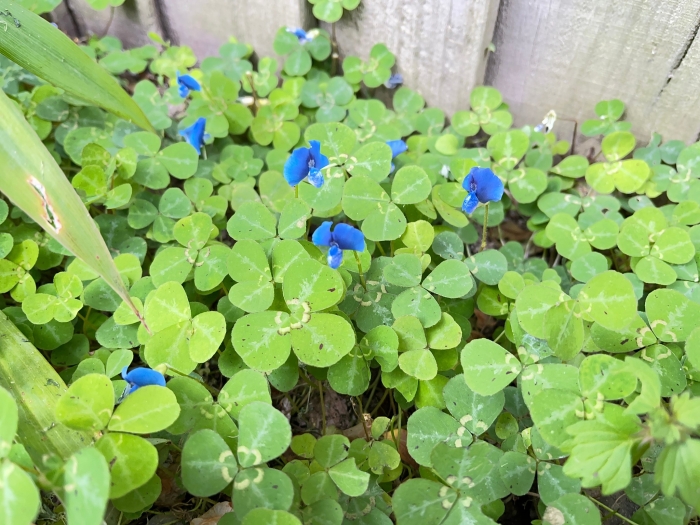Blue Oxalis
(Parochetus communis)
Blue Oxalis (Parochetus communis)
/
/

Jon Sullivan
CC BY 4.0
Image By:
Jon Sullivan
Recorded By:
Copyright:
CC BY 4.0
Copyright Notice:
Photo by: Jon Sullivan | License Type: CC BY 4.0 | License URL: http://creativecommons.org/licenses/by/4.0/ | Rights Holder: Jon Sullivan | Publisher: iNaturalist | Date Created: 2021-10-23T17:49:43-07:00 |











































Estimated Native Range
Summary
Parochetus communis, commonly known as Blue Oxalis, is an evergreen or semi-deciduous perennial herb native to moist, shady forest floors and stream banks in the Himalayas, Southeast Asia, and Vietnam. It is a low-growing plant reaching 10–20 centimeters (3.9–7.9 inches) in height, with distinctive clover-like leaves and striking blue papilionaceous flowers that bloom from summer to fall. The flowers, which can also be white or purple, are borne singly or in clusters on stalks and are particularly noted for their standard petal, which is notched at the tip and narrowed at the base.
Blue Oxalis is valued for its ornamental blue flowers, which add a splash of color to shady garden areas. It is suitable for underplanting in woodland gardens, as a ground cover, or in containers where its delicate foliage and flowers can be appreciated up close. While it thrives in full sun to part shade, it requires consistently moist soil with good drainage to prevent root rot. It is considered tender in cooler climates and may need protection or to be grown as an annual. Despite its beauty, it is not commonly seen in cultivation, possibly due to its specific growing requirements and sensitivity to cold.CC BY-SA 4.0
Blue Oxalis is valued for its ornamental blue flowers, which add a splash of color to shady garden areas. It is suitable for underplanting in woodland gardens, as a ground cover, or in containers where its delicate foliage and flowers can be appreciated up close. While it thrives in full sun to part shade, it requires consistently moist soil with good drainage to prevent root rot. It is considered tender in cooler climates and may need protection or to be grown as an annual. Despite its beauty, it is not commonly seen in cultivation, possibly due to its specific growing requirements and sensitivity to cold.CC BY-SA 4.0
Plant Description
- Plant Type: Herb
- Height: 0.3-0.7 feet
- Width: 0.3-0.7 feet
- Growth Rate: Moderate
- Flower Color: Blue
- Flowering Season: Summer
- Leaf Retention: Evergreen
Growth Requirements
- Sun: Full Sun, Part Shade
- Water: Medium
- Drainage: Medium, Fast
Common Uses
Low Maintenance
Natural Habitat
Moist, shady forest floors and stream banks in the Himalayas, Southeast Asia, and Vietnam
Other Names
Common Names: Shamrock-Pea, Shamrock Pea, Blue Oxalis
Scientific Names: , Parochetus communis, Parochetus maculata, Parochetus major, Cosmiusa repens, Parochetus oxalidifolius,
GBIF Accepted Name: Parochetus communis Buch.-Ham. ex D.Don